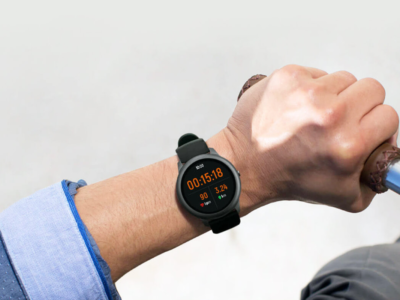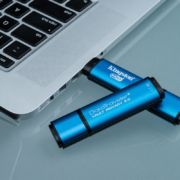From sound quality to battery life, there are many components to consider when deciding to buy a pair of wireless headphones.
Since Apple removed the headphone jack from the iPhone 7 in 2016, the market for wireless headphones has exploded – causing phone manufacturers such as Google and Samsung to follow suit.
As headphones are something we all tend to use on a daily basis, whether that’s during a workout at the gym or whilst working from your desk at home, it’s worth taking the time to decide on what pair of headphones will suit your needs the best. To help you out, here are some things to consider before buying your next pair of wireless headphones.
Accessibility of controls and how headphones pair up with other devices is important
For wired headphones, the controls are often located within physical buttons along the wire. However, as wireless headphones don’t have this option, basic controls are typically found on the earpieces themselves. These controls may come in the form of conventional buttons, while others use touch controls or voice commands.
Although the button layout is sometimes determined more by style than functionality, it’s still important to take the accessibility of these controls into thought. For instance, if the controls on a pair of wireless headphones are hard to find in a hurry, they may not be suitable for gym-goers wanting to quickly change to the next track on their playlist.
Another feature to consider is how the headphones pair with other devices. Most wireless headphones use Bluetooth to pair up with your phone or an external speaker. However, there are some that use the NFC functionality to speed up pairing.
A battery life of at least 3 hours is ideal for day-to-day use
Looking at how long the battery lasts and how easily they charge are important components to consider when you are looking to buy a pair of wireless headphones. Majority of wireless headphones will offer a couple of hours of battery life when fully charged, which is fine for day-to-day use. If you are a person who knows that you will need a pair to last you a full day, then it’s important to consider this when looking at different headphones.
True wireless earphones often come with their own charging case, which helps to keep your headphones topped up throughout the day. As there is no direct connection with wires, wireless headphones must be charged to be used – which is why battery life is one of the most important things to consider.
Consider the sound quality of headphones at different price points and brands
Before committing to a pair of wireless headphones, take time to consider the audio quality. The sound quality you receive on a pair of Bluetooth headphones will all depend on what audio codec they use. A codec is a piece of software that determines how Bluetooth is transmitted from a source, such as your smartphone, to your headphones. It is responsible for encoding and decoding digital audio data in a specific format and both your audio player and headphones need to support it.
Put simply, early versions of Bluetooth were never meant for high-quality audio transmissions meaning audio was compressed heavily. These Days, many wireless headphones are equipped with aptX technology. aptX technology makes sure you get the most out of your audio. It is a proven technology that compresses and decompresses audio as it is transmitted over Bluetooth from a source to a receiving device, without damaging the quality of audio.
Try to find out which codecs your preferred wireless headphones support. For example, the majority of Android devices launched within the last couple of years support aptX and most other Bluetooth audio codecs, whilst Apple on the other hand, doesn’t support this codec on the iPhone or iPad. Instead, Apple devices only support SBC and AAC – an enhanced version of SBC.
Wireless headphones should be comfortable and convenient
Both form factor and size are two areas that most people tend to focus on when looking to invest in a pair of wireless headphones, and for good reasons too. It’s important to consider the physical attributes of a pair of headphones just as much as other qualities, as ultimately you may use them on a daily basis, so they should be comfortable and convenient.
Wireless headphones come in three different forms: over-ear, on-ear, and in-ear. Both over-ear and on-ear headphones, pretty much look and function the same as their wired counterparts. On-ear headphones simply rest on top of the ears but do not fully enclose them. Whereas over-ear headphones completely enclose the entire ear. Although they can be seen as big and clunky, over-ear headphones allow for better sound quality, but may not be as comfortable or portable.
In-ear headphones, however, are quite the contrast. Also known as “earbuds”, this style is perhaps the most common type of headphones on the market today. In-ear headphones are ultra-portable with small earbud tips, which are inserted into the ear canal. This style creates a seal that almost ‘cuts out’ the outside world, by cancelling any ambient noise. Typically, battery life is shorter, but these headphones come with a charging case that maximises your playtime.
Understanding the general differences between these standard headphone types is an important step when it comes to headphone shopping.
Good quality headphones come with a higher price
As with any purchase, the cost of a pair of wireless headphones could be the ultimate deciding factor. Compared to wired headphones, wireless headphones come with a more expensive price tag. However, this doesn’t mean you have to completely empty your wallet in order to bag yourself a decent pair of high-quality headphones. Premium headphones or certain brands will come at a premium price. It all depends on what you want to use your headphones for. For instance, if you are looking for a pair of headphones for a professional music project, then it may be worth considering a pair of wireless headphones with advanced features and a more expensive price tag.
There are plenty of affordable, high-quality headphones on the market that offer multiple features to help you get the most of your audio. It’s just important to take the time to consider what purpose and features they must have to suit your needs.






















Comments